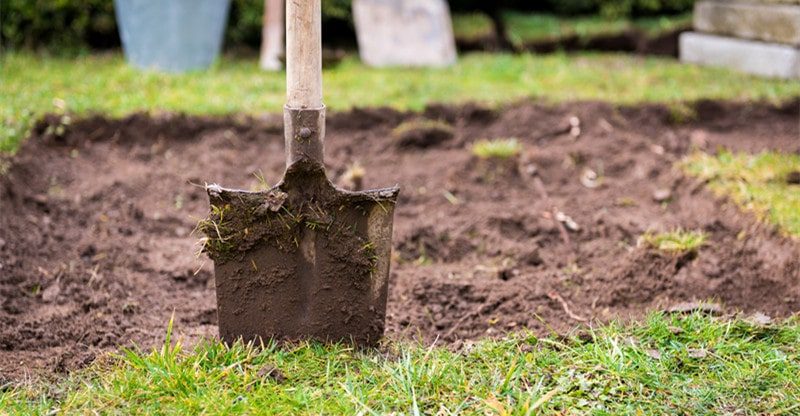What to Know Before Digging on Your Lawn
The spring weather presents an excellent opportunity to do some DIY projects. One of these is digging on your lawn. While it may appear simple, it’s prudent to think through the project before jumping into it. Your digging will likely involve touching your lawn.
According to Business Wire, 81% of all Americans have a lawn. If you plan to do any home improvement project involving digging on your lawn, you want to make sure that you call the right people. This ensures that you don’t damage underground lines on your property.
Buried under the dirt in your home are various utility lines for services to your home, including gas, water, electricity, TV cable, sewer, and telephone. Damaging or digging up any of these lines can put you into trouble and create unnecessary, costly repairs. It’s recommended that you call 811 so they can check for these lines, pipes, and conduits. Here’s what you need to know before digging on your lawn.
Call the Utility Marking Services
Your first step into successfully digging a hole in your yard is calling 811 and informing them about your intentions. Whether you want to plant a tree, create a garden pond, add a patio, dig fence post holes or dig the foundation for a shed or garage, you need to inform your utility marking services to ensure you don’t damage any pipes or lines that run under your home.
If you’re hiring a contractor, one of you can call 811 at least two business days before starting the project. For instance, if you want to start your project on a Monday, you must call the previous Wednesday. Failing to call can lead to lawsuits and other costly repairs. According to the annual Litigation Trends survey done in 2021, about 46% of litigations were brought against companies for contract disputes.
Sharpen Your Shovel
Slicing through hard soil can be a challenge if you’re not well-armed. You want to ensure that your shovel is sharp enough to penetrate the hard soil. You can use a file, but a grinder with a metal-grinding disc is the fastest way to sharpen. Don’t do it as if you’re sharpening a knife. Let it be a bit blunt with a 45-degree edge.
Fold Back the Sod
When digging, avoid damaging the sod. Instead, slice it along one side of the trench’s path and fold it over. When you refill and flatten your trench or holes, flip it back into place and begin watering. You can also utilize this opportunity to harvest some sod and patch up bad areas of your lawn. You can neatly slice up bits of sod with a spade, but it can be slow.
If your home improvement project involves a large area, you can rent a power sod cutter, especially if you’re harvesting or planning to redo your lawn.
Make Sure Your Contractor is Insured
Before starting any home improvement project, it’s prudent to ensure that the contractor you hire legally has the necessary documents to work in your home. Liability insurance helps pay for any damage that could result from the digging. Bonding is also essential as it protects you if the contractor fails to complete the job or fails to meet financial obligations, such as paying for damage caused to your property.
Take Care of the Soil
Avoid raking soil from the grass later by piling it on plywood or cardboard. Remember, this is the soil that lies below your lawn. You want to ensure that it’s back to its place as soon as you’re done. Placing the soil on cardboard means you just need to scoop the dirt off of it when you want to refill the hole or put grass on top.
According to For Construction Pros, mixed and granular soils with less than 15% cohesive soil are easily compacted with vibrating plates and rammers. Therefore, be sure to check if the soil needs compaction depending on the project.
Working on any home improvement project that involves your lawn requires careful planning. Be sure to work with a contractor to ensure no damage occurs to the rest of the lawn. The end result will leave you with a lawn you can be proud of.



